We live full time in a 1987 32′ Rockwood in New England, starting in November 2011 so Propane is near and dear to our hearts. As we revived and grudgingly updated the quarter century old systems we danced around the 100 pound propane tank and its original fill valve. The only other place that I had seen these is on the VW type II Westfalia campers. Finally we couldn’t fill the tank again. Couldn’t find anyone willing to touch the tank. So we took the least intrusive route and disassembled the Auto Stop Valve and replaced the o-rings. We bought Viton o-rings because that what stands up best to halogenated cutting oils and the like. Never considered that propane boils at -40F. Buna-N is the material of choice because it works well with propane and stays resilient down to -40F. But we managed to keep most of a tank of propane and that was enough to allow me to order a modern 1-1/4 inch ACME thread double check fill valve and a 10% outage or bleed valve for the 80% fill line.
The solution is a lot easier than dealing with this early attempt at a solution without a problem. In the long run the only use that I can imagine for this Autostop valve is to allow operator-free propane tank filling.
- This is the valve from hell. It has a serious design problem, but in good condition it will work as advertised. Other than good condition?
- This is the Auto Stop from the vent side, On the left is the 1-1/4 inch Acme connection for the fill and on the right the 1 inch pipe thread that screws into the tank.
- The shiny brass thing in the center is the single check valve. This is the valve that should be holding the propane in the tank when the outage valve is closed.
- I’ve removed the top plate from the valve body. On the left is the pigtail of pipe that connects to the outage port. On the right is the outage exhaust to atmosphere.
- Here we are looking inside the top plate. On the left is the pigtail which connects directly to the 80% full port on the tank. This line carries tank pressure at all times.
- Here is a slightly closer look at the bottom or inside of the AutoStop top plate. The hole on the left connects directly to the propane tank through the pigtail. The hole in the center is closed by the outage valve or with the outage valve open communicates to the exhaust port on the right.
- This is the top of the brass AutoStop valve body. When the outage valve is closed this chamber is in direct communication with the propane tank through the pigtail of tubing at all times.
- This is the valve body with the spool valve removed. The small end is the button you push if the propane isn’t flowing fast enough and the large diameter contains the o-ring that seals the propane in the top cavity between the top plate and the top of the spool valve at tank pressure.
- Here is where the first sign of trouble comes from. This is the weep or bleed hole between the top and middle o-rings. If the top o-ring leaks propane will escape through this hole.
- Underneath the flange that holds the top cap onto the valve body we see the other side of the weep hole. If propane is coming out here there is no way to stop the leak until the tank is empty. The valve must be repaired or replaced.
The solution to the AutoStop problem is to replace this valve with two new valves, an industry standard double check fill valve and a 10% outage or bleed valve at the 80% fill line on your tank.
- This is the new valve that you need to fix your problem. This valve is a direct replacement for the AutoStop Valve. Equipped with 1-3/4″ Acme filling connection and 3/4″ NPT thread. It has a high filling capacity and a one piece body. This valve is used primarily for filling ASME fuel containers. Filling rate is approximately 20 GPM with a 10 pound differential. Valve comes with a cap with a plastic retaining strap. This is the most common fill valve.
- This is the other new valve that you need too fix your problem. This valve is a direct replacement for the AutoStop Valve connection to the port on your ASME tank at the 80% full level. For containers where mounting is to be done at the maximum allowable filling level. Has No. 54 drill size orifice. Much smaller than the outage vent the AutoStop valve requires for proper operation.
In some jurisdictions state regulations require that this work be done by a certified propane technician. Having these parts on hand may make it easier for your certified technician because for his day to day work these are not a high replacement item and would not be a stock item.
Here are the AutoStop patent drawings and description:

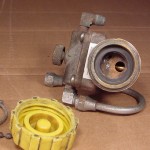
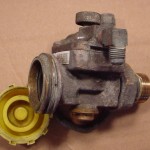
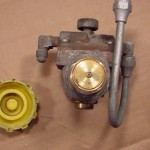
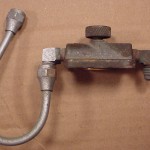
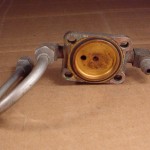
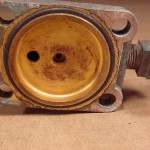

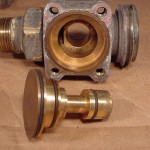
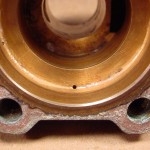
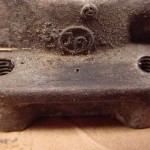
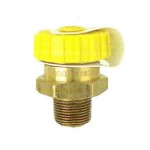
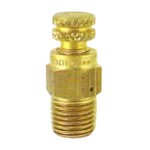
27 Responses to The Infamous Auto Stop Propane Fill Valve.